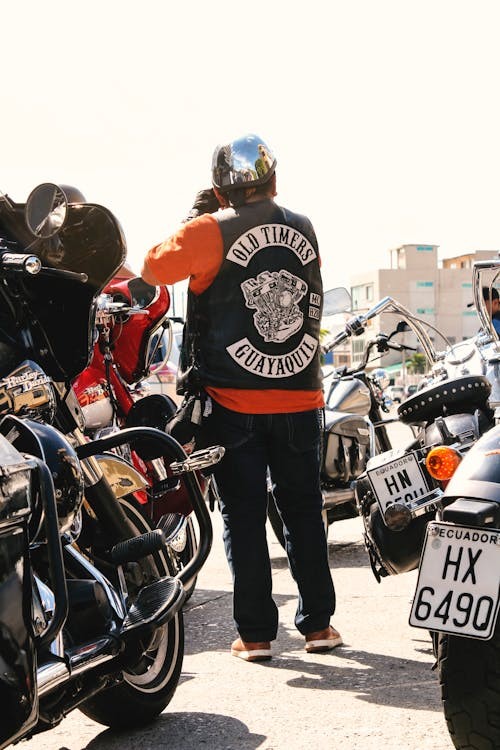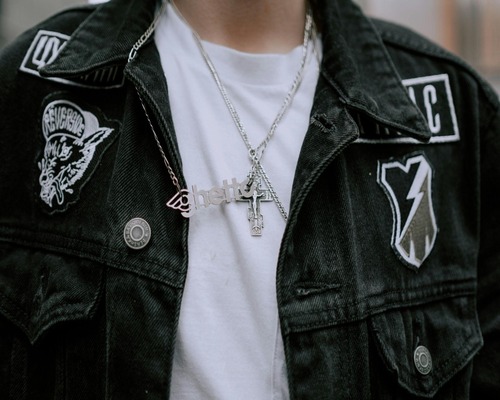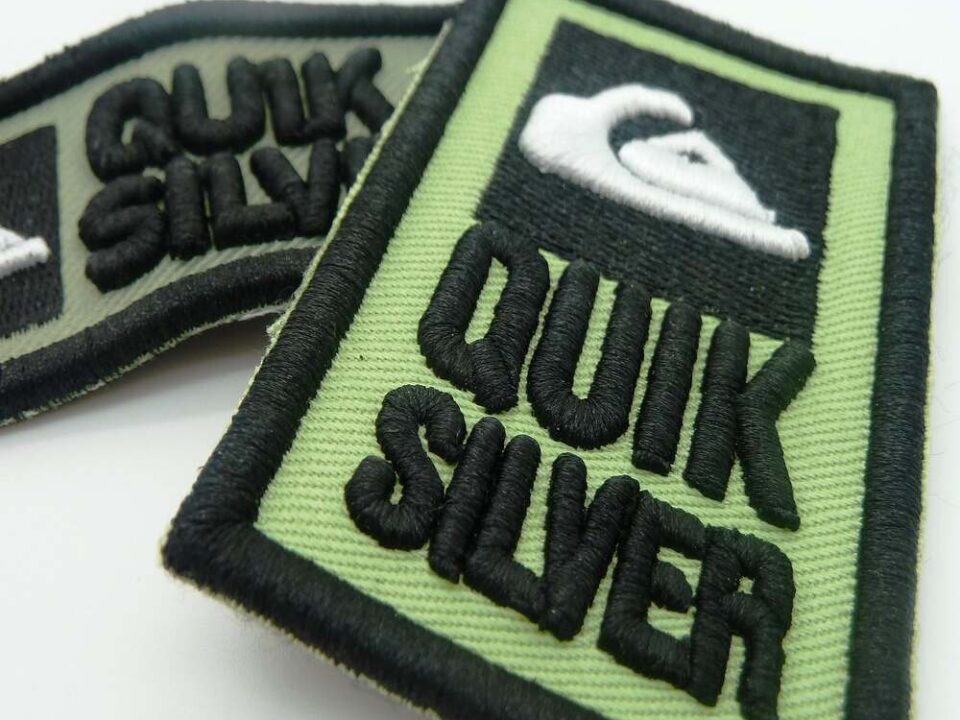Custom Patches for Jackets – 5 rules for design and display

7 Best Chenille Patches Ideas For 2024
February 21, 2024
Elevate Your Style: A Step-by-Step Guide to Displaying Custom Patches
March 29, 2024Custom patches are a means of portraying your identity, expressing your personality, and adorning your garments. But a patch is not a mere embroidered piece of fabric. It has the power to represent meaningful connotations across various cultures, especially for individuals belonging to a particular group.
Patches have long been a prominent feature on jackets, from military units to motorcycle clubs and sports teams to social clubs. However, designing and displaying patches is an art that requires careful consideration of both aesthetics and symbolism. Let’s explore the rules for designing and displaying custom patches for jackets to ensure you can do it the right way.
The Power of a Custom Patch
Patches have evolved to represent affiliations, achievements, and allegiances. For example, fraternal organizations, sports teams, and social clubs have adopted custom patches as symbols of membership and pride. But in other cases, they are a prominent visual representation of club identity and hierarchy, such as in motorcycle clubs.
For instance, a patch on the back of a motorcycle rider’s jacket indicates membership to a club. Believe it or not, riding club patches have specific rules, and people who aren’t members of a club may not be aware of them. So let’s look at some rules for more clarity.
Rules for Designing Custom Patches for Jackets
When adorning leather jackets with custom patches, you need to pay careful attention to detail, symbolism, and imagery, whether you’re creating patches for personal use, a group, or an organization. Here are a few rules you need to keep in mind to ensure the design you choose effectively communicates its intended message.
1. Focus on Originality
Ideally, you want to design an original custom patch that stands out and captures your identity or that of your group. So, you need to avoid overused imagery and focus on incorporating personal touches that enhance meaning and authenticity.
2. Clarity of Design
The design of a custom patch should be clear and easily recognizable, even from a distance. For this reason, it’s best to avoid designing a patch with intricate details that could get lost when the patch is scaled down or viewed from afar. That’s why incorporating bold lines and simple shapes into a patch is often more effective than complex imagery.
3. Understand the Symbolism
Custom patches often serve as visual identifiers, representing the wearer’s identity, beliefs, or affiliations. Every element of your patch has a symbolic significance, whether it’s the color, imagery, or text, reflecting your values, identity, or purpose. Some symbols also carry cultural and historical significance. So be aware of their historical and cultural context to ensure your custom patch is interpreted correctly.
For instance, a riding club does not have stringent membership requirements and will sell an independent biker patch, meaning there are only a few – if any- rules for riders to join the club, such as owning a bike of the same make or the riders are from a particular locality.
On the other hand, a motorcycle club patch symbolizes the brotherhood of the riders, narrating their ethos and values. They typically have specific membership requirements. So, if a person wishes to join the club, they cannot merely purchase the patch. A set of motorcycle vest patches rules must be met before one can be earned, requiring a substantial commitment to that club.
4. Consider the Size and Shape
The size and shape of a custom patch should be appropriate for its intended placement on the jacket. While larger patches are suitable for the back of the jacket, smaller ones are better suited on the sleeves or chest. However, make sure the size and shape are balanced to enhance the overall aesthetic of your jacket.

Source: Pexels
5. Assess the Quality of Materials
Not all patches are the same. The quality of the materials used in making a patch can significantly impact its durability and longevity. For instance, embroidery is a common aspect of biker jackets. It helps to create a distinct, textured, three-dimensional appearance that is clearly visible from a distance. So make sure to choose quality materials for your custom patch, paying special attention to components that will help complement its style, purpose, and function.
Rules for Displaying Custom Patches on Jackets
Once you’ve completed the design phase, the next step is to display the custom patches on your jacket. Placement and arrangement play a vital role in enhancing the visual impact of the patches and creating a cohesive look. Here are a few rules you need to keep in mind when displaying the patches.
1. Consider the Jacket Style
The style of a jacket greatly influences the overall effect of the patch. Furthermore, it also dictates its placement and arrangement. The seams, pockets, and other features of a jacket can affect the layout of your patches.
For example, motorcycle jackets typically feature a large central patch on the back panel so it can be prominently seen. On the other hand, bomber jackets display smaller patches on the chest or sleeves.
2. Understand the General Placement Guidelines
Motorcycle vest protocol dictates that club members exhibit their patches with utmost respect and adherence to club rules and traditions. However, many people are unaware they cannot display a custom patch wherever they want. There are rules of placement for those who partake in different groups.
For instance, motorcycle clubs typically display a three-piece patch on the back of their jackets. It contains a top rocker (meaning the uppermost patch, which is the name of the club), a central patch ( which is the club’s logo), and a bottom rocker (meaning the lowest patch, which denotes the club’s location).

Source: Pexels
These patches are handed out in phases, beginning with the top rocker followed by the central patch, forming a two-piece patch. Each patch has a meaning, so members must comply with club procedures, code of conduct, and customs. For example, people who display patches without understanding what is a bottom rocker could cause territorial misunderstandings.
3. Display Hierarchy
Establish a hierarchy among patches to convey their relative importance. For instance, according to the bottom rocker patch rules, this patch displays the territorial boundaries of motorcycle clubs. So even if the central patch on the back of the jacket serves as the focal point, the small patch positioned lower holds significant importance. Moreover, since these patches are earned, they help convey the status of a member within the group.
4. Maintain Symmetry and Balance
When arranging patches on a jacket, aim for symmetry and balance. Consider distributing your patches evenly across the entire jacket, such as the front, back, and sleeves. This helps create a visually pleasing configuration. Make sure not to crowd or cluster your patches in one area, as this can detract from the overall aesthetics.
5. Secure Attachment
When attaching the patches to the jacket, make sure to secure them firmly using an adhesive or a thread that matches the color of the patch’s border. Follow the contours of the jacket to maintain a smooth appearance and prevent puckering or distortion of the fabric. Consider reinforcing patches with additional stitching for added durability, especially for those positioned at spots that receive a lot of wear and tear. For instance, use 100% nylon thread to display a side rocker patch, as it may detach if not firmly attached.

Source: Pexels
Over to You
Patches are more than pieces of cloth with colored thread. Customized ones can communicate your values and ideas in a concise and impactful manner. They symbolize and convey abstract concepts visually, making them tangible and accessible. By incorporating these symbols on your jackets, you reinforce your values and your commitment to those ideals.
However, the quality of your patches should be at the forefront of your mind since they will be constantly exposed to heat, rain, wind, and other environmental factors while riding. After all, you want to create custom patches for jackets that are durable and long-lasting.
Partnering with patch makers like Anything Chenille means you receive the best custom patches – easily washable, colorfast, and durable. We utilize the highest quality materials and thread to ensure your patches remain a part of your identity for years to come.




